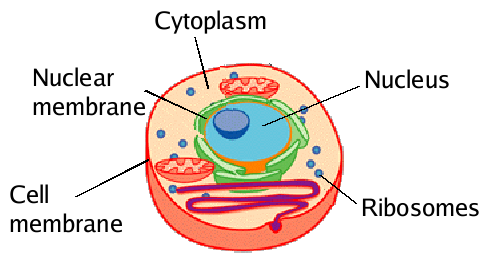Death is often associated with negativity and darkness. However when it comes to the human body, death is a common, daily process. Our cells constantly die and duplicate, replenishing and maintaining the health of our body. Apoptosis, a form of programmed cell death, is a method for cells to replace old, faulty cells with younger, healthier ones.
“Apoptosis, a form of programmed cell death, is a method for cells to replace old, faulty cells with younger, healthier cells.”
Cell death is an essential part of life. From removing defective cells due to cell replication errors, to mechanistic problems that can alter cellular functioning, cell death provides the body with a way to protect itself against unwanted harms. There are many reasons why the body may need to get rid of a cell – reasons including external harm from sun exposure, stress, injury, or even uncontrollable reasons such as age – and the body is always monitoring the health of our cells to ensure the survival of the body through cycling of said cells. Additionally, cell death is not only for harmful ones; cell death forms us to appear as we are. There is cell death in the webbing of our hands to form the fingers and toes that we use for daily life. If there are any cells that the body may deem as problematic, the body will ensure death of such cells.
“Additionally, cell death is not only for harmful ones; cell death forms us to appear as we are.”
There are a few different types of cell death, ranging from silent to inflammatory. Silent cell death refers to the lack of an inflammatory reaction as a result of its death – apoptosis. There are many ways for silent cell death to occur, generally beginning in the internal pathways of the cell. Proteins within the cell trigger a cascade of reactions that can lead to apoptosis. There are two pathways to apoptosis, extrinsic and intrinsic, both ultimately leading to the activation of caspase-3 or caspase-7, protein enzymes that are responsible for the degradation of the cytoskeleton of the cell and other essential proteins for cell functioning.
Inflammatory cell death is when cells die by bursting or lysing, releasing messengers to local cells signaling inflammation. This can be referred to as necrosis, and it occurs due to the presence of noxious stimuli like tissue damage, where fluid fills the cell to the point of bursting. There are many reasons for this mechanism of cell death, ranging from physical trauma to bacteria or viruses in the body. Dr. Nabeeha Khalid and Mahzad Azimpouran emphasize that figuring out the cause of necrosis can be a gateway into producing treatments for it is more essential than just removing these dead cells. Primarily, necrosis has been significant in the immune response against COVID-19. Necrosis prevents the spreading of a virus by killing cells and recruiting pro-inflammatory cells to help fight the virus.
Cell death is both important and essential to daily life functioning. Daily, we are fighting against bacteria and viruses, and cycling through damaged cells for healthier cells. Despite the importance of cell death, there is a Goldilocks principle that applies to cell death, where too little cell death would lead to the formation of tumors and cancer, but too much cell death can lead to potentially life-threatening tissue degeneration. Understanding the mechanisms behind these essential processes can be harnessed in the discovery and development of the effects diseases, viruses, and external harm have on the health of our bodies.






